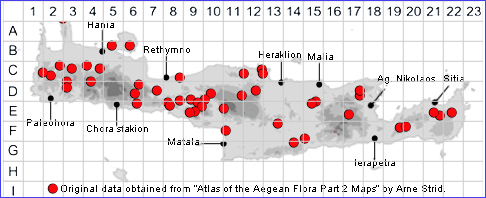SPECIES DESCRIPTION
LOTUS CONIMBRICENSIS
Family and Genus:- See- LEGUMINOSAE/Sect. ERYTHROLOTUS
Common Names:- None
Homotypic Synonyms:- None
Meaning:- Lotus (Gr) The ancient name for various leguminous plants.
Conimbricensis (L) From Condeixa, Portugal.
General description:- Glabrous or sparsely pilose annual.
Stems:-
1) 10-25 cm. usually several, procumbent to ascending.
Leaves:-
1) 5-foliate, slightly glaucous.
2) Lower pair, broader than the others, obliquely ovate.
3) Upper, 3, 4-10 mm. long, narrowly obovate to rhombic.
Flower:-
1) Peduncles, shorter than the leaves, 1(-2)-flowered.
2) Calyx, c. 7 mm teeth subequal, narrowly lanceolate, equalling or somewhat
exceeding the tube.
3) Corolla, slightly longer than the calyx 5-8 mm, white or pale rose-pink with a
purple tipped keel.
Fruit:-
1) Legume, narrow linear, 40-7 x 1-2 mm. arched upwards, terete.
Key features:-
1) Legume, strongly curved.
2) Peduncles, 1(2-)flowered shorter than the leaves.
3) Corolla, pale rose-pink with a purple keel.
Habitat:- Sandy coastal habitats, field margins, olive groves, seasonally damp
spots in phrygana. 0-800(1200) m.
Distribution:- NW Africa and Portugal eastwards to Greece. - Widespread in the
Mediterranean region, eastwards to Anatolia. Fairly widely scattered on Crete.
Flowering time:- Mar-June.
Photos by:- Steve Lenton

